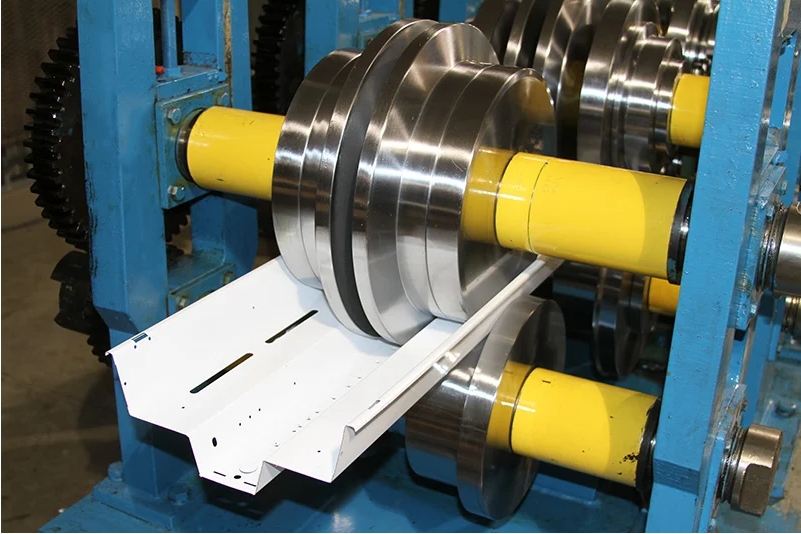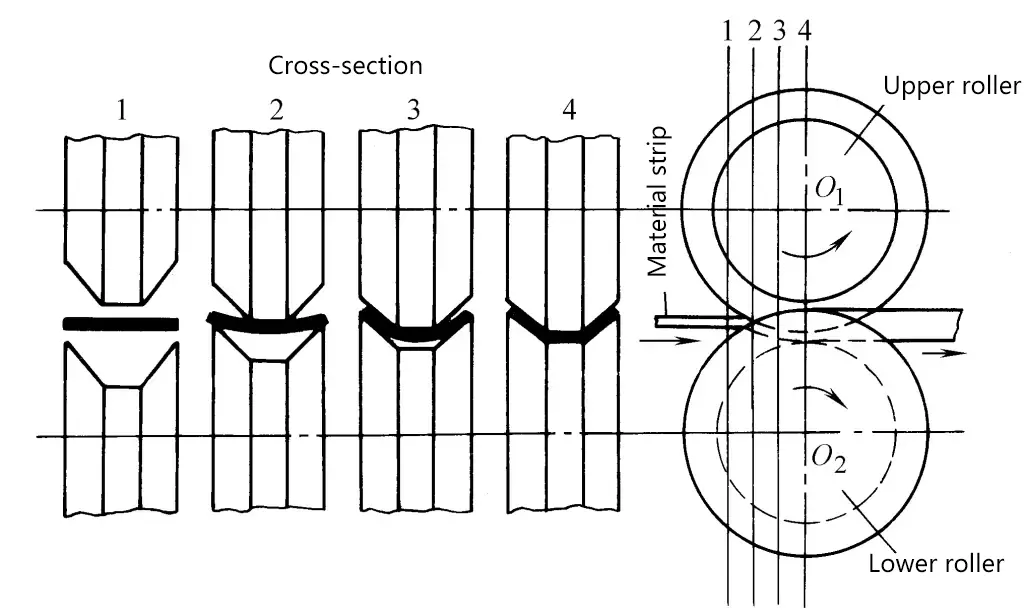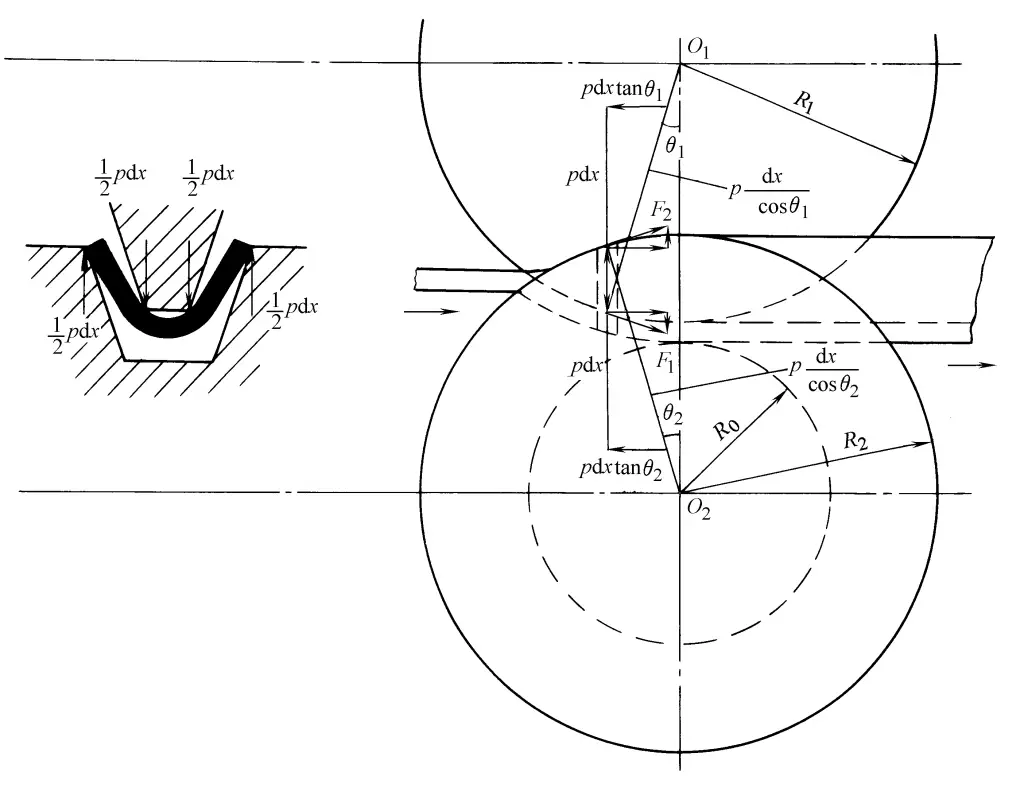Navigation Menu
Contact Us
- Email:
- info@wxavatar.com
- Address:
- Yurong Village, Yuqi Street, Huishan District, Wuxi, China.
Release Date:Jan 13, 2025 Visit:45 Source:ROLL FORMING MACHINES LTD
The working principle of roll forming is shown in Figure 1, which is achieved by bending and advancing the material through each set of forming rollers in sequence. If we look at the first set of rollers, the forming process is shown in Figure 2, which includes the metal sheet entering the rollers, bending as it moves forward, and exiting after being fully formed at the center of the rollers (section 4).

Figure 1 Roll forming

Figure 2 Molding process
Figure 3 shows the analysis of the rolling force on the vertical section during the forming process. Over a small length dx, the vertical components of the central force pdx/cosθ 1 , pdx/cosθ 2 applied by the upper and lower rolls correct the bending. At the same time, the horizontal components of the central force pdx·tanθ 1 , pdx·tanθ 2 act in the direction of material entry and exit.

Figure 3 Force analysis in roll forming
If the friction force F 1 =μ·pdx/cosθ 1 , F 2 =μ·pdx/cosθ 1 generated at the center cannot overcome the horizontal component of the central force pdx·tanθ 1 , pdx·tanθ 2 , the paper will slide and will not be pushed forward.
According to the actual measurement results of the pressure distribution on the forming roller, the pressure on the roller increases from the inlet side and reaches the maximum value at the center of the roller, so that the friction force that pushes the material forward reaches the maximum. In order to facilitate the entry of the material end, an effective method is to shape the end into a triangular strip as much as possible and quickly feed it into the center of the roller.